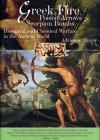
Rats : Observations on the History and Habitat of the City's Most Unwanted Inhabitants - Robert Sullivan
"And the muttering grew to a grumbling;
And the grumbling grew to a mighty rumbling;
And out of the houses the rats came tumbling."
- Robert Browning
I used to take a short-cut through a back alley near my home, cutting two minutes off of my morning commute to the local subway station. Generally the laneway was empty of foot traffic except for the handful of parked cars and the garbage dumpsters festoned with cryptic graffiti and spray-painted tags. The alley was damp, deserted and the air layered with that dank, moist smell, just short of rotten but still driving in that general direction.
That particular yellow-lit morning, I was startled to see a furtive, pale brown creature about half the size of a housecat saunter out carefully from behind the local pizza parlor, dragging what look like about half of a medium-sized pizza behind it. It looked up, saw me, paused as if to say "What?" incredulously, then resumed its labor, dragging its hard-won prize along the edge of the curb. Obviously take-out. I spotted the long, thin, hairless tail trailing it and realized, with a profound bemusement, that it was a rat.
I don't know why I was so startled. Rats are as much a resident of the urban byways as people, albeit generally just a little more circumspect.
Rats by Robert Sullivan delves into the hidden world of rattus norvegicus, the infamous city-dwelling Norwegian Rat or Brown Rat (although they are often as not grey, off-pink, tan, whitish, or other color variations). Sullivan, whose previous off-the-beaten-path works include The Meadowlands, a study of the fetid swamplands outside of New York, (famous as a garbage dump and the sort of place the Sopranos might plant their former business partners) is really the perfect guide to a study of the urban rat, bringing the right mix of humor, readability and infectious curiosity to the subject.
Rats provides insight not only into the world of the rat, but how rats have grown with humanity, the lives they build in the thin margins of civilization and, how they frankly flourish mightily at times in their relationship with people. Rats offers a penetrating slice through the usual urban byways, weaving history, urban planning, archaeology, and natural history together into a fascinating and highly readable mix.
The book offers a number of eye-opening (i.e. disquieting) facts that lend a certain adventurous and squirmy feel to your next walk downtown. For example, a single pair of rats has the potential for 15,000 descendents in a single year. Think about that, the next time the kids run screaming through the house, knocking over furniture...
Weird as it sounds, one of the best books of the year is all about rats...
Learn more about these pesky rodents here and here. For the Hollywood take on rats, well, the all-time must-see rat movie is the original Willard, it's sequel Ben...or the recent Willard re-make.
Got rats? These guys might be able to help...or if you prefer, you can always call The Pied Piper.




